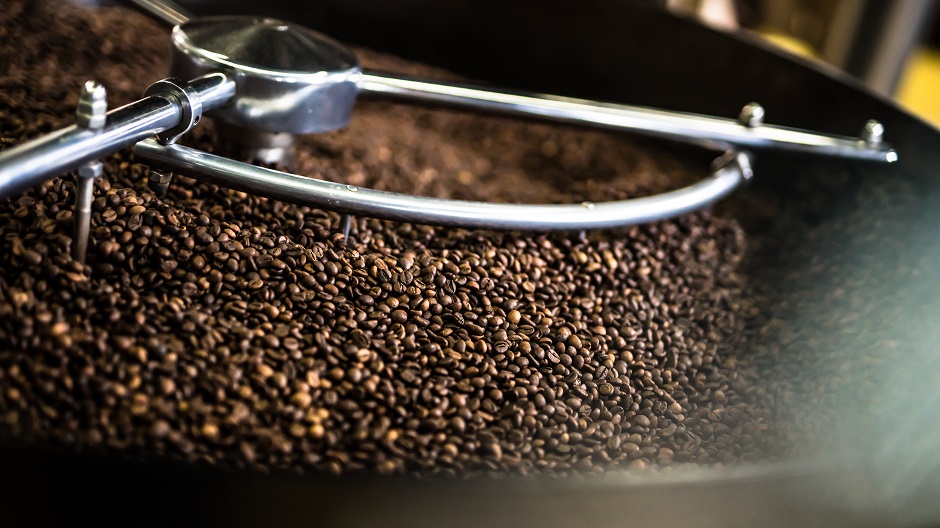 Coffee roasting is a fascinating process that transforms green coffee beans into the aromatic and flavorful beans we love to brew. In this blog post, we will delve into the art and science of coffee roasting, unravelling the secrets behind this essential step in the coffee production chain. From understanding how coffee beans are roasted to exploring the differences between various roasts, we'll equip you with knowledge to appreciate and savour the diverse flavours that arise from the roasting process.
Coffee roasting is a fascinating process that transforms green coffee beans into the aromatic and flavorful beans we love to brew. In this blog post, we will delve into the art and science of coffee roasting, unravelling the secrets behind this essential step in the coffee production chain. From understanding how coffee beans are roasted to exploring the differences between various roasts, we'll equip you with knowledge to appreciate and savour the diverse flavours that arise from the roasting process.
The Importance of Roasting
Roasting is the pivotal step that unlocks the potential of coffee beans. It is during this process that the beans undergo chemical changes, resulting in the development of complex flavours, aromas, and the characteristic brown colour. The art of roasting lies in finding the delicate balance between preserving the beans' inherent qualities and infusing them with unique characteristics imparted by the roasting technique.
How Coffee Beans Are Roasted
Understanding how coffee beans are roasted is key to appreciating the flavours in your cup. Coffee beans undergo a carefully controlled heating process, where temperature, time, and airflow play crucial roles. By applying heat to green coffee beans, roasters initiate chemical reactions that unlock the beans' unique characteristics. Discover more about the art and science of coffee roasting:
-
Green Coffee Beans: The journey of coffee beans begins with their harvest as green beans. These beans are unroasted and possess a grassy smell, lacking the familiar coffee aroma.
-
Preparing for Roasting: Before roasting, the green coffee beans undergo careful cleaning and sorting processes to remove any impurities. This ensures a consistent and quality roast.
-
Applying Heat: Coffee roasting is all about applying heat to the green coffee beans to initiate chemical reactions within them. Traditionally, roasting is conducted in drum roasters or hot air roasters.
-
Roasting Profiles: Roasters carefully monitor temperature, time, and airflow during the roasting process to achieve specific flavour profiles. These parameters can be adjusted to bring out different characteristics in the beans, such as acidity, body, sweetness, and aroma.
-
First Crack and Second Crack: As the beans heat up, they go through two important stages called the "first crack" and the "second crack." The first crack is characterised by a cracking sound as the beans expand and release moisture. The second crack is optional and typically associated with darker roasts.
-
Cooling and Resting: After roasting, the beans are quickly cooled to halt the roasting process. They are then left to rest for a period of time, allowing flavours to develop and volatile compounds to stabilise.
Factors That Affect The Roasting Process
-
Time and Temperature: The duration and temperature of the roasting process significantly influence the final flavour profile. Longer roasting times and higher temperatures result in darker roasts with more developed flavours.
-
Bean Origin: Coffee beans from different regions possess distinct flavour profiles, and the roasting process can either enhance or mask these characteristics. Roasters consider the origin of the beans when determining the optimal roast level.
-
Roasting Equipment: The type of roasting equipment used, such as drum roasters or fluid bed roasters, can impact the roast profile and the consistency of the results.
The Difference Between Roasts
Each roast level offers a distinct flavour experience. Light roasts showcase the natural flavours of the coffee, while medium roasts strike a harmonious balance.
-
Light Roast: Lightly roasted beans are roasted for a shorter duration at lower temperatures, preserving the bean's natural flavours. Light roasts are characterised by a light brown colour and a bright, acidic taste. They showcase the unique characteristics of the coffee's origin, such as fruity or floral notes.
-
Medium Roast: Medium roasts have a slightly darker colour and offer a balanced combination of acidity and body. The flavours are more rounded compared to light roasts, with notes of chocolate, nuts, and caramel becoming prominent. Medium roasts strike a harmonious balance between the bean's original characteristics and the roasting process.
-
Dark Roast: Dark roasts undergo a longer and hotter roasting process, resulting in beans with a dark brown to nearly black colour. Dark roasts exhibit bold flavours with reduced acidity and increased body. These roasts often have smoky, rich, and bittersweet flavours, sometimes accompanied by hints of spices.
-
Espresso Roast: Espresso roasts are specifically tailored for espresso brewing methods. These roasts tend to be darker to enhance the intensity and sweetness of the coffee. They are characterised by a robust body, low acidity, and a rich, caramelised flavour profile.
Coffee bean roasting is an art form that marries science and craftsmanship. From carefully selecting the right beans to applying heat at precise temperatures, the roasting process creates the diverse flavours and aromas that make each cup of coffee a unique experience. By understanding the intricacies of coffee bean roasting, you can appreciate the efforts that go into creating the perfect brew and discover the vast world of flavours waiting to be explored in your cup.



